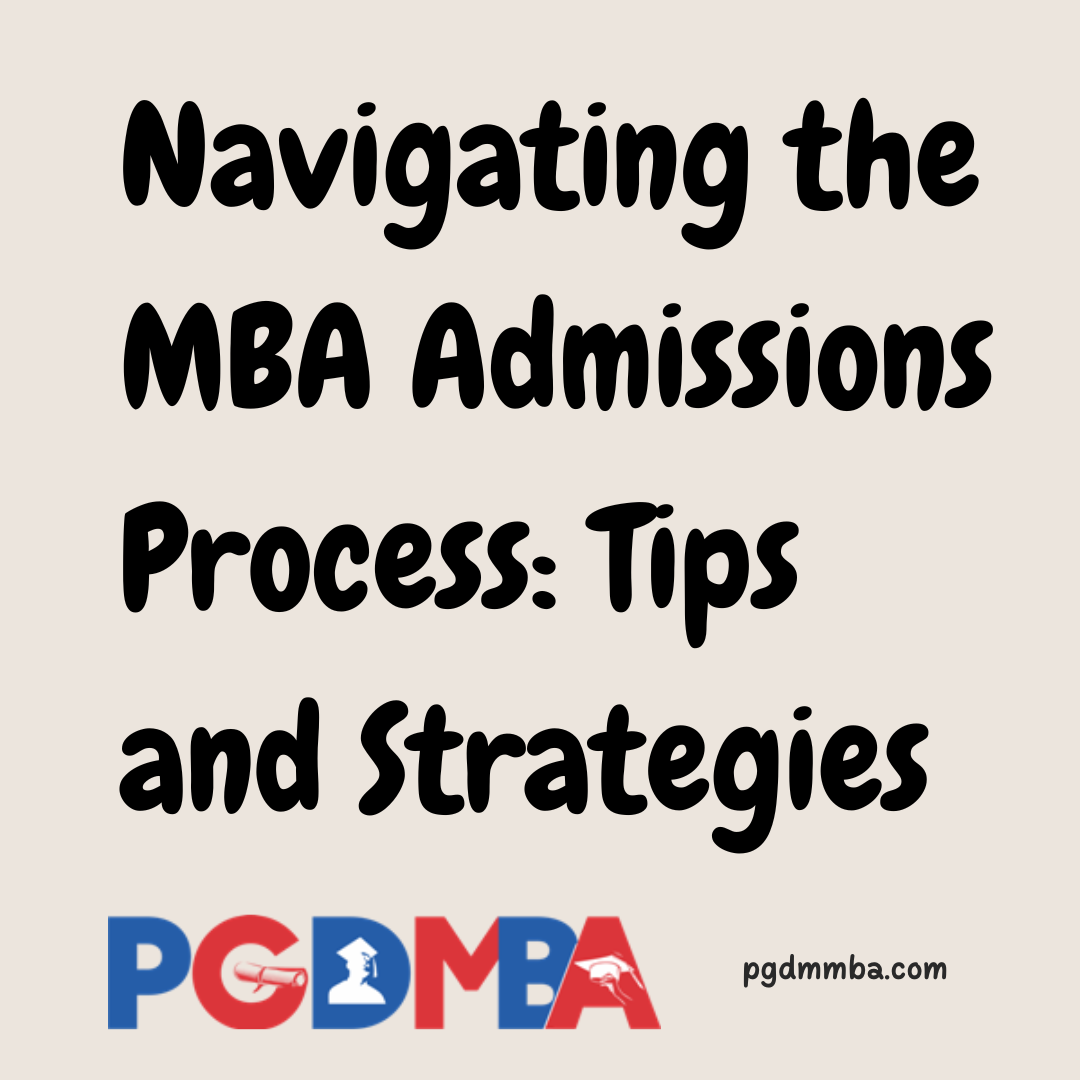Pursuing a Master of Business Administration (MBA) can be a transformative step in advancing your career and personal growth. However, the MBA admissions process can be complex and competitive, requiring careful planning and preparation. In this blog post, we will explore essential tips and strategies to help you navigate the MBA admissions process successfully.
- Self-Assessment and Goal Setting: Before embarking on the MBA admissions journey, it’s crucial to conduct a thorough self-assessment. Reflect on your professional experience, strengths, weaknesses, and long-term career goals. Define why you want to pursue an MBA and how it aligns with your aspirations. This clarity will help you create a compelling narrative in your application.
- Research and Identify the Right MBA Programs: There are numerous MBA programs available, each with its own unique features and specializations. Research different schools, their rankings, curriculum, faculty, alumni network, and campus culture. Identify programs that resonate with your goals and values, ensuring a good fit for your personal and professional development.
- Prepare for Standardized Tests: Most MBA programs require applicants to submit standardized test scores, such as the GMAT or GRE. Familiarize yourself with the test structure, content, and scoring system. Develop a study plan and allocate sufficient time for test preparation. Consider taking practice exams and seek resources like study guides or online courses to enhance your performance.
- Craft a Stellar Application: Your application is your opportunity to showcase your unique qualities, experiences, and achievements. Pay attention to each component, including your resume, essays, letters of recommendation, and interviews. Tailor your application to reflect your fit with the school and emphasize your strengths, leadership potential, and impact in previous roles.
- Build a Strong Network: Networking plays a vital role in the MBA admissions process. Engage with current students, alumni, and admissions representatives to gain insights into the program and demonstrate your interest. Attend MBA fairs, info sessions, and webinars to connect with the admissions team and learn more about the school’s offerings.
- Seek Recommendations: Choose recommenders who can speak to your professional abilities, leadership potential, and personal qualities. Provide them with relevant information about your goals, achievements, and experiences to help them write persuasive letters of recommendation. Stay in touch with your recommenders throughout the process to ensure they submit their letters on time.
- Prepare for Interviews: If shortlisted, you may be invited to an interview as part of the admissions process. Thoroughly research the school and anticipate potential interview questions. Practice your responses to ensure clarity and coherence. Emphasize your fit with the program, demonstrate your knowledge about the school, and articulate how you can contribute to the MBA community.
- Demonstrate Growth and Leadership: Admissions committees value candidates who show continuous growth and leadership potential. Highlight instances where you took initiative, demonstrated resilience, or led a team to success. Illustrate how an MBA will facilitate your growth and help you make a more significant impact in your future endeavors.
Conclusion: The MBA admissions process can be demanding, but with careful preparation and strategic thinking, you can increase your chances of securing a spot in your dream program. By conducting a thorough self-assessment, researching programs, preparing for standardized tests, crafting a stellar application, building a network, seeking strong recommendations, and excelling in interviews, you’ll be well on your way to a successful MBA application. Good luck on your journey towards an enriching and rewarding MBA experience!


